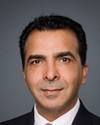Mr. Speaker, I am pleased to rise in this House to speak to Bill S-9 at third reading stage. Members will recall that, at second reading, we recommended that the bill be passed so that the Standing Committee on Justice and Human Rights could study it in depth.
I am always skeptical about the Conservative government having a bill introduced in the Senate, which is made up of unelected people who are not accountable to Canadians. The government is bringing some very important bills in through the back door, including this one, Bill S-9, which takes a step required to ratify international treaties.
However, we are talking about something that pertains to public safety, which is an important issue to the NDP in this House, because we believe it is our duty to protect the public. That is one of the main reasons why we are here in Parliament.
That being said, it is also very important to approve the agreements and international treaties that we sign. People must understand that we often proceed a step at a time. The process often takes a long time, even too long. We agree to treaties at international meetings. Then, representatives return to their respective countries and have these treaties ratified, which is the reason for Bill S-9. The purpose of the agreement and the international commitments made was to create a legal framework to ensure that nuclear terrorism would be properly dealt with as a criminal offence. This required a number of amendments to the Criminal Code.
We know that the Senate passed Bill S-9 on March 27, 2012. It amends the Criminal Code in order to implement the criminal law requirements of the two international treaties to combat terrorism. The first is the Convention on the Physical Protection of Nuclear Material, which was amended in 2005. We were already a party to this convention, which we initially ratified in 1980. When I say that things move at lightning speed, I am not far from the truth. The other treaty is the International Convention for the Suppression of Acts of Nuclear Terrorism, which was signed in 2005.
The bill contains 10 clauses that add four new offences to part II of the Criminal Code, making it illegal to possess, use or dispose of nuclear or radioactive material or devices or to commit an act against a nuclear facility or an act that disrupts its operation with intent to cause death, serious bodily harm or substantial damage to property or the environment.
The Senate passed an amendment to add making a device to the bill, making it illegal to use or alter nuclear or radioactive material or devices or to commit an act against a nuclear facility or an act that disrupts its operation with intent to compel a person, government or international organization to do or refrain from doing any act; to commit an indictable offence under an act of Parliament with intent to obtain nuclear material, radioactive material or a device; to obtain access to or control of a nuclear facility; or to threaten to commit one of these three offences.
Other amendments have also been introduced that stem from these four new offences and are no less important. The bill adds the definition—and this is important—of certain terms used in the description of the new offences, including “environment”, “nuclear facility”, “nuclear material”, “radioactive material” and “device”, and amends the definition of “terrorist activity”. A new section of the Criminal Code is also introduced to ensure that people who commit or attempt to commit one of these offences when they are abroad can be prosecuted in Canada.
Amendments are made to the provisions of the Criminal Code relating to electronic surveillance to ensure that those provisions apply to the new offences. The four new offences are also considered primary designated offences for the purposes of DNA warrants and collection orders.
Lastly, this bill also amends Canada's rule against double jeopardy, in other words being tried and convicted more than once for the same crime. Accordingly, if an individual has been tried and convicted for any of the four new offences outside Canada, the rule against double jeopardy will not apply when the foreign trial did not meet certain basic Canadian legal standards. In such circumstances, a Canadian court can try this person again for the same offence for which he or she was convicted by a foreign court.
There is a lot of information here. Some have described this bill as a technical bill. Indeed, it might seem quite technical, because it deals with concepts that are not familiar to us. Nuclear terrorism in Canada is not the kind of thing we talk about when chatting with friends. It is definitely not the kind of conversation we have every day.
The Standing Committee on Justice and Human Rights took its role very seriously, considering the nature of the subject. We heard from some very interesting witnesses, including representatives from the Canadian Nuclear Safety Commission and people from the Department of Transport, since nuclear material is transported in Canada.
People might be shocked to learn what goes on right under their noses, which they are not told about for obvious reasons of national security. Also, we would not want to let potential wrongdoers know when nuclear material is being transported from point A to point B.
The committee also heard from representatives of the Department of Public Safety and Emergency Preparedness regarding policies related to managing national security and from the RCMP regarding criminal operations involving national security and related investigations. Representatives from the Department of Justice also appeared, including the Minister of Justice, who spoke about this bill.
We were able to ask questions before the bill was sent to committee. We have mentioned the time it took for the government to introduce Bill S-9 and the fact that the bill was introduced through the back door, through the Senate. We wanted to know why it took so long, especially since this is a huge national and international priority and, according to some, is one of Canada's biggest problems and most serious threats.
We also wanted to know why, when they were drafting the bill, they did not think about the concept of making a device, which came up in the Senate. Nevertheless, I am more or less satisfied. As a lawyer, I appreciate hearing from people at the Department of Justice. They said that the concept of making a device was already included in the bill. However, since we cannot be too careful, they agreed to add the wording, which they had considered included in the existing terminology. That settled that.
We could also leave out the concept of autrefois convict. In other words, if someone is being prosecuted in a foreign country, this law would allow Canada to retain the right to prosecute a Canadian who has committed one of the new offences. The charter includes provisions to enforce this.
The answers provided seem satisfactory, even though there may be some concerns when we see how tests for compatibility with the charter go at the Department of Justice.
In light of our international treaty obligations, we will support the bill, as it stands, at third reading. That is my recommendation. I think that my NDP colleagues will do the same. It is extremely important.
Nuclear terrorism is a difficult concept to grasp. People need to understand. I asked the parliamentary secretary what is the biggest threat in terms of nuclear terrorism. I do not want to scare people here, but we have to be realistic. There are some malicious people out there. There is no doubt about it. We cannot bury our heads in the sand.
Nuclear terrorism threats can come in different forms.
According to the explanations we heard in committee, there are four categories: the use of a stolen nuclear weapon; the use of an improvised nuclear device made of fissionable material; the use of a radiological dispersal device, often referred to as a dirty bomb; and the sabotage of a nuclear facility.
Canada is indeed a country that is rich in uranium, but we must not bury our heads in the sand thinking that we are immune. The article Graham Allison wrote in 2005 entitled “Is Nuclear Terrorism a Threat to Canada's National Security?” comes to mind. The title is quite striking, and in the article, the author makes some comparisons between the United States and Canada.
Having grown up in the Outaouais region, I admit that this article sent a shiver down my spine even though I am not an especially impressionable person. Yet, the fact remains that we need to be realistic about what is happening in the world. The question that Mr. Allison asked on page 717 of the summer 2005 issue of the fissionable material was “What about Canada?” He had this to say:
A nuclear bomb going off on Parliament Hill in Ottawa would cause everything from the supreme court to the Ottawa Congress Centre to disappear; everything for several blocks past the National Archives and the Canadian War Museum would be left in rubble; and fires would consume the Canadian Museum of Nature. Tens of thousands of people would die immediately and the seriously injured would number in the hundreds of thousands. Fallout from the blast would be carried by winds across Canada, contaminating farmland and cities alike and creating thousands of additional casualties.
I mention this to put things into context. Clearly, we would never want something like this to happen. However, as I was saying, we must do our utmost to protect Canadians, particularly when fairly accessible areas are left in the hands of malicious people, which could result in this type of damage.
Given that I am from the other side of the river in Gatineau, reading something like this really put things into perspective for me. We tell ourselves that this would be tragic but that it has never happened and that we are the greatest country in the world and that people here are friendly, open and welcoming. Yet, this is a strange world we live in.
We need to strike a balance. We cannot resort to hyperbole or forget to respect individual rights and freedoms. We need to have balanced policies that protect public safety while respecting human rights. If we manage that, we cannot go wrong.
Ian MacLeod wrote a series of articles in the Ottawa Citizen while we were studying the issue in committee. He wrote:
Nuclear officials are preparing to secretly transport a toxic stew of liquid bomb-grade uranium by armed convoy from Chalk River to a South Carolina reprocessing site.
The “high priority” mission marks the first time authorities have attempted to truck highly-enriched uranium (HEU) in a liquid solution, prompting nuclear safety advocacy groups on both sides of the border to sound the alarm for greater government scrutiny.
The Canadian Nuclear Safety Commission (CNSC) has confirmed the plan to the Citizen. It follows Prime Minister[...]’s commitment at last year’s global nuclear security summit to return HEU inventories to the United States to lessen the risk of nuclear terrorism.
I asked the officials from Transport Canada and Public Safety Canada what they thought about that. My objective was not to find out what route the trucks will be taking. Obviously, we do not want to provide malicious people with a map and the details of when a given convoy will be leaving and tell them that no one should be in the vicinity. We are not that naive.
However, I want to be able to respond to questions I get from the people of Gatineau. When they read this news in the Ottawa Citizen, a local newspaper, some of my constituents telephoned or wrote to me, asking if they should be worried. As the member for Gatineau, I want to be able to tell them that they have no reason to be concerned, because our experts are doing everything they can to ensure that we have nothing to worry about and that every possible safety measure is taken.
I sincerely hope that is the case. However, I cannot guarantee it, nor do I think that anybody here in the House of Commons can. We are counting on protocols being followed and we hope that all security and technological measures will be implemented so that nothing serious happens. Canadians are lucky to have so many waterways, but we are well aware that nuclear waste would eventually make its way to us. I have always been worried that, sooner or later, nuclear materials could enter our water and cause problems.
I do not want to make a mountain out of a molehill, but I do want to emphasize the importance of Bill S-9 given the international treaty requiring states parties to take tough measures. We have to look at how we handle this type of material, facilities, storage locations and manufacturing facilities so that we can implement critical security measures. We need to amend the Criminal Code to ensure that the necessary measures will be taken should offences relating to nuclear terrorism occur, although we hope that will never happen.
I have always believed that prevention is key. I am not against harsh and specific indictments in such cases. Some of these new offences are liable to life in prison, which is the maximum penalty available in the Canadian criminal justice system and shows just how serious such cases are.
I would like to talk about one witness who really impressed me during the committee study of Bill S-9. His name is Matthew Bunn, and he is an associate professor of public policy at the Belfer Center for Science and International Affairs at Harvard University. He described the context of this bill:
Since the September 11 attacks in the United States, both countries have improved security for their own nuclear materials, helped others to do the same, helped to strengthen the International Atomic Energy Agency's efforts, and worked to strengthen other elements of the global response. But if the United States and Canada are to succeed in convincing other countries to take a responsible approach to reducing the risks of nuclear theft and terrorism at the Nuclear Security Summit in the Netherlands in 2014 and beyond, then our two countries have to take the lead in taking responsible action ourselves.
He also convinced me of the following:
Hence, it is important for both of our countries to ratify the main conventions in this area, the Convention on the Physical Protection of Nuclear Material and the International Convention for the Suppression of Acts of Nuclear Terrorism, as the Seoul Nuclear Security Summit called on countries to do. As [we all know], the leaders at the Seoul summit set a target of gaining enough ratifications to bring the amendment to the physical protection convention into force by the 2014 summit.
That is why Mr. Bunn urged us to ratify these two conventions and pass Bill S-9. He was embarrassed by the fact that Canada is further ahead than the U.S in that regard. Canada has shown leadership in this matter, and I am pleased with that.
I will close by reiterating that, like it or not, the threat of terrorism is real. This does not mean that something will happen tomorrow and that we should create mass hysteria. However, we need reasonable and well-drafted measures. For once the government has a good bill, which it could have introduced directly in the House rather than in the Senate.
However, we must encourage the members of the House to work on protecting public safety and strengthening our role as an international leader.








